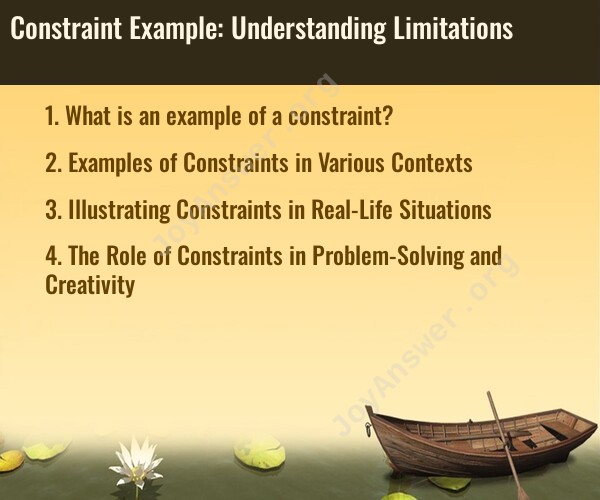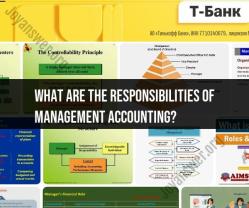What is an example of a constraint?
A constraint is a limitation or restriction that affects what can be done in a particular situation. Constraints can be found in various aspects of life, from project management to design, and they play a crucial role in decision-making and problem-solving. Here's an example of a constraint:
Budget Constraint:Suppose you are planning to organize a wedding, and you have a limited budget for the event. This budget constraint places a limit on the amount of money you can spend on the wedding. It means you must make choices and prioritize certain expenses over others. You might have to decide whether to have a smaller guest list, choose less expensive decorations, or opt for a less elaborate venue to stay within your budget. The budget constraint is a clear example of a limitation that influences your decisions and options in planning the wedding.
In this example, the budget constraint is a common and practical limitation that people encounter when organizing events, projects, or making financial decisions. Constraints like this can be found in many areas of life, and understanding and managing them is a fundamental part of problem-solving and decision-making.
Examples of Constraints in Various Contexts
Constraints are limitations or restrictions that can affect how we think, act, and create. They can be external or internal, and they can be imposed by ourselves or by others.
External constraints can include:
- Physical constraints: These are constraints that are imposed by the physical world around us. For example, the laws of physics constrain our ability to travel faster than the speed of light.
- Social constraints: These are constraints that are imposed by the society in which we live. For example, social norms may constrain our behavior in certain situations.
- Economic constraints: These are constraints that are imposed by the availability of resources. For example, a limited budget may constrain our ability to purchase a new car.
Internal constraints can include:
- Cognitive constraints: These are constraints that are imposed by our own cognitive abilities. For example, our limited working memory capacity can constrain our ability to solve complex problems.
- Emotional constraints: These are constraints that are imposed by our own emotions. For example, fear may constrain our ability to take risks.
Illustrating Constraints in Real-Life Situations
Here are some examples of constraints in real-life situations:
- A student must write a research paper on a topic that is approved by their professor. The topic is a constraint on the student's writing.
- A musician must write a song in a specific key or style. The key or style is a constraint on the musician's composition.
- A software engineer must write a program that meets certain requirements. The requirements are constraints on the engineer's design.
- A budget committee must allocate funds to different departments within a company. The budget is a constraint on the committee's decisions.
- A team of scientists must design an experiment that can be completed within a certain time and budget. The time and budget are constraints on the team's design.
The Role of Constraints in Problem-Solving and Creativity
Constraints can play a role in both problem-solving and creativity.
In problem-solving, constraints can help to focus our attention and narrow down the range of possible solutions. For example, if we are trying to solve a math problem, the constraints of the problem (e.g., the numbers that we are allowed to use, the operations that we are allowed to perform) can help us to find the solution.
In creativity, constraints can help us to generate new and innovative ideas. For example, the constraints of a sonnet (e.g., the specific rhyme scheme and meter) can help a poet to write a more creative and original poem.
Constraints can be both challenging and beneficial. On the one hand, they can limit our options and make it more difficult to achieve our goals. On the other hand, they can also help us to focus our attention, narrow down the range of possible solutions, and generate new and innovative ideas.
Overall, constraints are a ubiquitous and important part of our lives. By understanding the role of constraints in problem-solving and creativity, we can learn to use them to our advantage.












